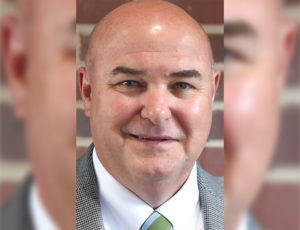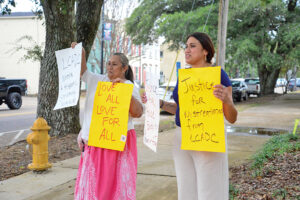WASHINGTON — Get ready for two weeks of intensifying warnings about how crucial, popular government services are about to wither. Many of the threats could come true.
President Barack Obama and congressional Republicans made no progress this past week in heading off $85 billion in budget-wide cuts that automatically start taking effect March 1.
Lacking a bipartisan deal to avoid them and hoping to heap blame and pressure on GOP lawmakers, the administration is offering vivid details about the cuts’ consequences: trimmed defense contracts, less secure U.S. embassies, furloughed air traffic controllers.
Past administrations have seldom hesitated to spotlight how budget standoffs would wilt programs the public values.
When a budget fight between President Bill Clinton and congressional Republicans led to two government shutdowns, in 1995 and 1996, some threats came true, like padlocked national parks.
Others did not.
Clinton warned that Medicare recipients might lose medical treatment, feeding programs for the low-income elderly could end and treatment at veterans’ hospitals could be curtailed. All continued, thanks to contractors working for IOUs, local governments and charities stepping in and the budget impasse ending before serious damage occurred.
This time, at stake is not a federal shutdown but a range of automatic cuts. Between March 1 and Sept. 30, the remainder of the government’s budget year, it would mean reductions of 13 percent for defense programs and 9 percent for other programs, according to the White House budget office.
The cuts, plus nearly $1 trillion more over the coming decade, were concocted two years ago. Administration and congressional bargainers purposely made them so painful that everyone would be forced to reach a grand deficit-cutting compromise to avoid them.
Hasn’t happened.
A look at the cuts and the chilling impact the administration says they would have, based on letters and testimony to Congress:
–A key reminder: Social Security, Medicare and veterans’ benefits, Medicaid and a host of other benefit programs are exempted. The cuts take effect over a seven-month period; they don’t all crash ashore on March 1. If a bipartisan deal to ease them is reached, lawmakers could restore some or all the money retroactively.
–On the other hand: Left in effect, these cuts are real even though their program-by-program impact is unclear. The law limits the administration’s flexibility to protect favored initiatives, but the White House has told agencies to avoid cuts presenting “risks to life, safety or health” and to minimize harm to crucial services.
–Defense: Troops at war would be protected, but there’d be fewer Air Force flying hours, less training for some Army units and cuts in naval forces. A $3 billion cut in the military’s Tricare health care system could diminish elective care for military families and retirees. And, in a warning to the private defense industry, the Pentagon said it would be “restructuring contracts to reduce their scope and cost.”
–Health: The National Institutes of Health would lose $1.6 billion, trimming cancer research and drying up funds for hundreds of other research projects. Health departments would give 424,000 fewer tests for the AIDS virus. More than 373,000 people may not receive mental health services.
–Food and agriculture: About 600,000 low-income pregnant women and new mothers would lose food aid and nutrition education. Meat inspectors could be furloughed up to 15 days, shutting meatpacking plants intermittently and costing up to $10 billion in production losses.
–Homeland Security: Fewer border agents and facilities for detained illegal immigrants. Reduced Coast Guard air and sea operations, furloughed Secret Service agents and weakened efforts against cyberthreats to computer networks. The Federal Emergency Management Agency’s disaster relief fund would lose more than $1 billion.
–Education: Seventy thousand Head Start pupils would be removed from the prekindergarten program. Layoffs of 10,000 teachers and thousands of other staffers because of cuts in federal dollars that state and local governments use for schools. Cuts for programs for disabled and other special-needs students.
–Transportation: Most of the Federal Aviation Administration’s 47,000 employees would face furloughs, including air traffic controllers, for an average of 11 days.
–Environment: Diminished Environmental Protection Agency monitoring of oil spills, air pollution and hazardous waste. The color-coded air quality forecasting system that keeps schoolchildren and others inside on bad-air days would be curtailed or eliminated. New models of cars and trucks could take longer to reach consumers because the EPA couldn’t quickly validate that they meet emissions standards.
–State Department: Slow security improvements at overseas facilities, cuts in economic aid in Afghanistan and malaria control in Africa.
–Internal Revenue Service: Furloughed workers would reduce the IRS’ ability to review returns, detect fraud and answer taxpayers’ questions. It offered no specifics.
–FBI: Furloughs and a hiring freeze would have the equivalent impact of cutting 2,285 employees, including 775 agents. Every FBI employee would be furloughed 14 workdays.
–Interior Department: Hours and service would be trimmed at all 398 national parks, and up to 128 wildlife refuges could be shuttered. Oil, gas and coal development on public lands and offshore waters would be diminished because the agency would be less able to issue permits, conduct environmental reviews and inspect facilities.
–Labor: More than 3.8 million people jobless for six months or longer could see their unemployment benefits reduced by as much as 9.4 percent. Thousands of veterans would lose job counseling. Fewer Occupational Safety and Health Administration inspectors could mean 1,200 fewer visits to work sites. One million fewer people would get help finding or preparing for new jobs.
–NASA: Nearly $900 million in cuts, including funds to help private companies build capsules to send astronauts to the International Space Station.
–Housing: The Department of Housing and Urban Development said about 125,000 poor households could lose benefits from the agency’s Housing Choice Voucher program and risk becoming homeless.
You can help your community
Quality, in-depth journalism is essential to a healthy community. The Dispatch brings you the most complete reporting and insightful commentary in the Golden Triangle, but we need your help to continue our efforts. In the past week, our reporters have posted 46 articles to cdispatch.com. Please consider subscribing to our website for only $2.30 per week to help support local journalism and our community.







